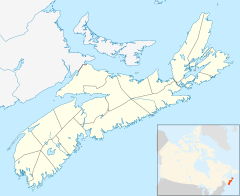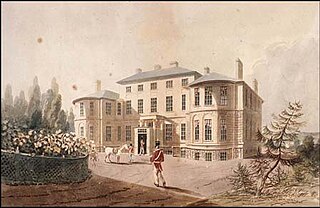| Henry House | |
|---|---|
 Henry House c. 1879 | |
| General information | |
| Type | House |
| Address | 1222 Barrington Street |
| Town or city | Halifax Regional Municipality, Nova Scotia |
| Country | Canada |
| Coordinates | 44°38′25″N63°34′15″W / 44.64028°N 63.57083°W |
| Current tenants | Henry House (restaurant) |
| Completed | 1834 |
| Client | builder/owner = John Metzler, stonemason working on Citadel Hill fortifications |
| Official name | Henry House National Historic Site of Canada |
| Designated | 1969 |
| Type | Provincially Registered Property |
| Designated | 2005 |
| Type | Municipally Registered Property |
| Designated | 1981 |
Henry House is a two-and-a-half-storey stone house located on Barrington Street in the Halifax Regional Municipality, Nova Scotia, Canada. The house is designated a National Historic Site of Canada, [1] and is both a Provincially Registered Property and a Municipally Registered Property under the provincial Heritage Property Act. [2] [3]

A house is a building that functions as a home. They can range from simple dwellings such as rudimentary huts of nomadic tribes and the improvised shacks in shantytowns to complex, fixed structures of wood, brick, concrete or other materials containing plumbing, ventilation, and electrical systems. Houses use a range of different roofing systems to keep precipitation such as rain from getting into the dwelling space. Houses may have doors or locks to secure the dwelling space and protect its inhabitants and contents from burglars or other trespassers. Most conventional modern houses in Western cultures will contain one or more bedrooms and bathrooms, a kitchen or cooking area, and a living room. A house may have a separate dining room, or the eating area may be integrated into another room. Some large houses in North America have a recreation room. In traditional agriculture-oriented societies, domestic animals such as chickens or larger livestock may share part of the house with humans. The social unit that lives in a house is known as a household.

Nova Scotia is one of Canada's three Maritime Provinces, and one of the four provinces that form Atlantic Canada. Its provincial capital is Halifax. Nova Scotia is the second-smallest of Canada's ten provinces, with an area of 55,284 square kilometres (21,300 sq mi), including Cape Breton and another 3,800 coastal islands. As of 2016, the population was 923,598. Nova Scotia is Canada's second-most-densely populated province, after Prince Edward Island, with 17.4 inhabitants per square kilometre (45/sq mi).

Canada is a country in the northern part of North America. Its ten provinces and three territories extend from the Atlantic to the Pacific and northward into the Arctic Ocean, covering 9.98 million square kilometres, making it the world's second-largest country by total area. Its southern border with the United States, stretching some 8,891 kilometres (5,525 mi), is the world's longest bi-national land border. Canada's capital is Ottawa, and its three largest metropolitan areas are Toronto, Montreal, and Vancouver.






















